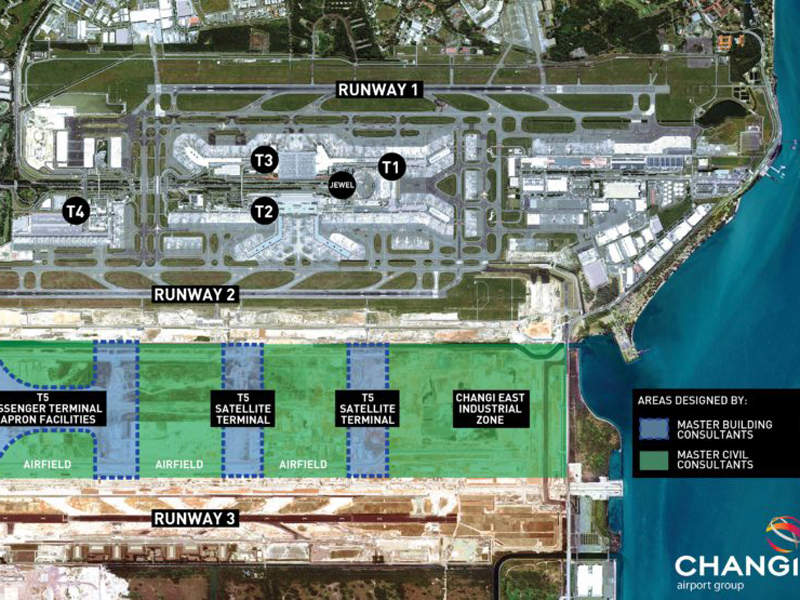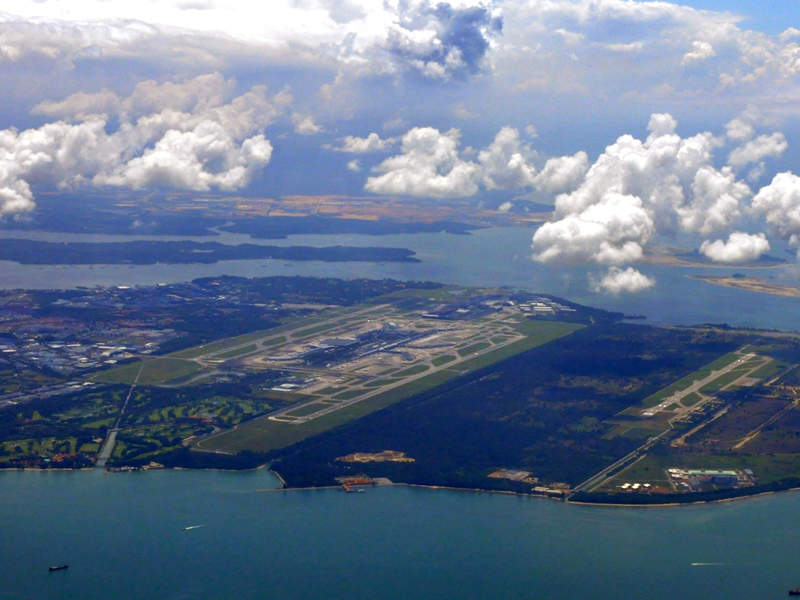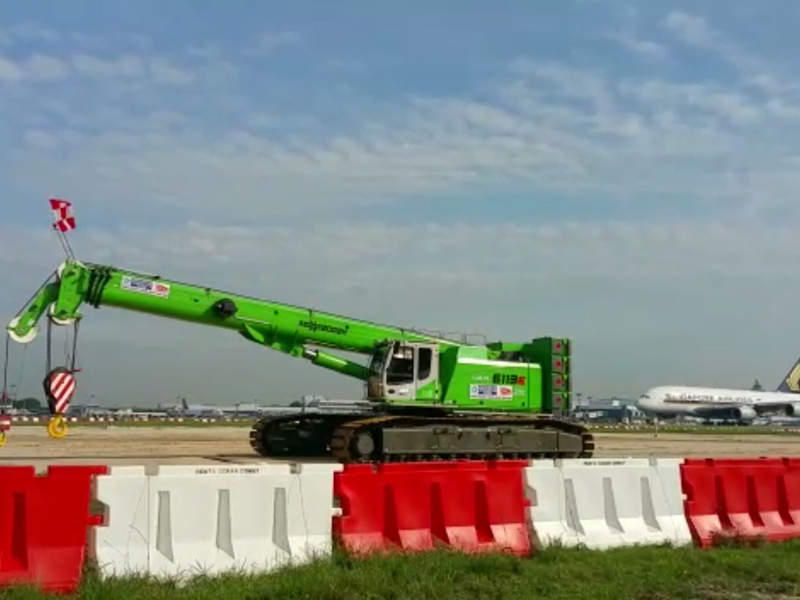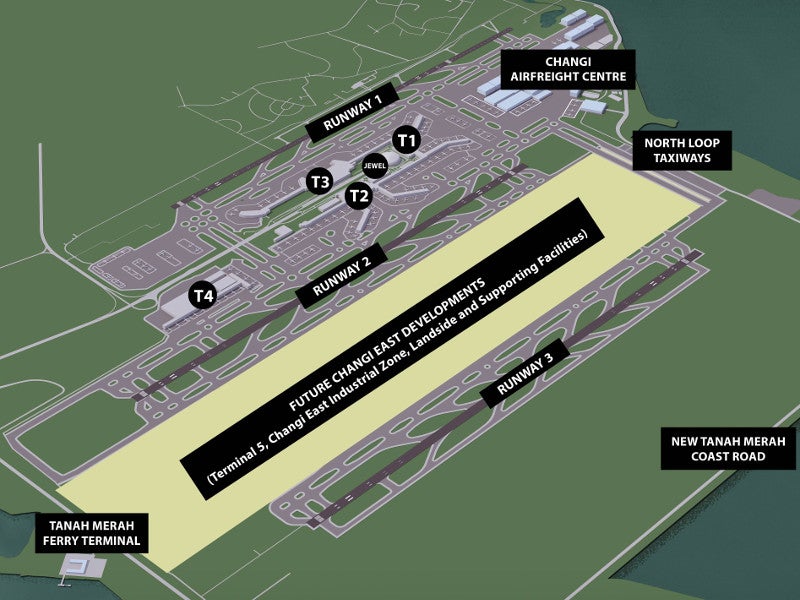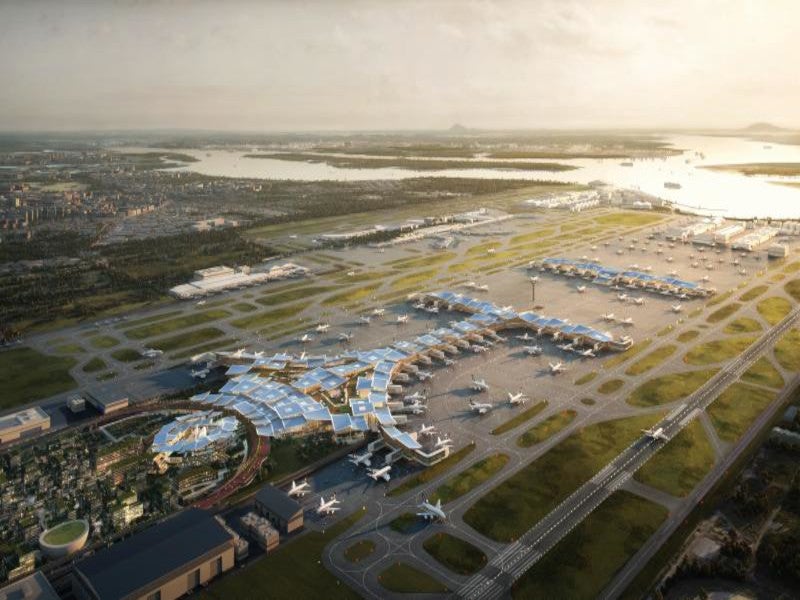Terminal 5 (T5) of the Changi International Airport in Singapore is being developed to meet the growing passenger traffic at the airport.
Estimated to cost approximately $10bn, the project marks the biggest expansion at Changi Airport to date. It is part of Changi East development, which also includes the development of a three-runway system and network of inter and intra-terminal tunnels.
The single integrated terminal will be bigger than the existing terminals at the airport. It will be built on a 1,080ha greenfield site located to the east of the airport.
Construction of the terminal is expected to commence in 2025 and be completed in mid-2030.
T5 will be able to handle up to 50 million passengers a year in the initial phase of operation, increasing the airport’s total annual passenger handling capacity to 135 million.
Terminal 5 development details
The Civil Aviation Authority of Singapore (CAAS), Changi Airport Group (CAG) and the Ministry of Transport collaborated to build Terminal 5 at the Changi international airport.
The planning for T5 and land preparation for Changi East began in 2014. Master building consultants (MBC) and master civil consultants were appointed in 2018.
The project was put on hold in 2020 for two years due to the Covid-19 pandemic. In 2022, the development of the project resumed.
The two-year break provided MOT, CAAS, and CAG with the chance to reassess the T5 design and make it more modular, robust, and sustainable.
The land preparation and drainage work at Changi East has been completed.
Terminal 5 facilities
The landside and airside facilities of Changi Airport’s Terminal 5 will include the main terminal building, satellite terminal building, ground transportation centre, cargo complex, primary landside roadway, taxiways, aircraft parking stands, and other supporting aviation infrastructure.
The developers designed the terminal to be flexible drawing from the experiences of the Covid-19 pandemic. The terminal can operate as smaller sub-terminals when required and adapted for use during contingencies. The space within the terminal can be used for testing operations and to separate high-risk passengers.
In addition, the terminal will feature contactless systems at passenger touchpoints to reduce the risk of transmission of diseases. It will be equipped with enhanced ventilation systems to increase fresh air and reduce the mixing of air.
The project also includes the development of aircraft maintenance, repair and overhaul facilities, roadway and drainage systems and establishing connections for utilities such as power, gas, fuel, water and telecommunications to the T5 building.
An 18km-long network of tunnels will be built to establish airside connections within T5, as well as between T5 and existing terminals 1, 2, 3 and 4 at the airport. The tunnels will allow for convenient movement of baggage, passengers and airside vehicles.
The project will also add more than 100 additional aircraft parking stands at the existing airport.
Sustainable features of Terminal 5
T5 is expected to be a Green Mark Platinum super low energy building certified by the Building and Construction Authority. It will feature solar panels, smart building management systems, district cooling and thermal energy storage to decrease carbon emissions.
It will also be able to handle alternative fuels, such as sustainable aviation fuel, as well as fixed ground power and cooling for aircraft parked at the gates.
The three-runway system at T5
The Changi East project also includes the development of a three-runway system. The airport is currently served by two runways – Runways 1 and 2. To develop the three-runway system, a third runway (Runway 3), previously used by the military, will be extended from 2.75km to 4km to handle larger aircraft.
The extension will create connections between Changi Airport Runway 3 and the airport’s existing airfield through 40km of new taxiways. It will also enable Runway 3 to facilitate safe travel for larger passenger aircraft. The project also includes the development of supporting infrastructure and systems for the operation of the three-runway system.
The three-runway system is expected to be completed in the mid-2020s.
Financing of the terminal
Funding for the Terminal 5 project will be provided jointly by the airport operator Changi Airport Group (CAG) and the Government of Singapore. The project will also be supported by commercial revenue and aeronautical charges.
The government of Singapore will provide approximately S$9bn ($6.8bn), while CAG has agreed to invest S$3.6bn ($2.73bn) for the Changi East project.
Contractors involved with the Terminal 5 project
CAG appointed a group of companies to deliver the Changi airport master plan, airfield and engineering design, consultancy services and functional design review of Terminal 5 in April 2018.
A consortium of architecture firms Heatherwick Studio, KPF (Singapore) and Architects 61 will provide architectural design services for the landside works.
SAA Architects is part of the MBC team and is the local delivery architect for the project.
A consortium of consulting firms Surbana Jurong Consultants, Arup Singapore and Mott MacDonald Singapore was selected to provide engineering and consultancy services, while DP Architects, an architecture firm, is responsible for the design of commercial spaces in the T5.
Changi Airport Planners and Engineers along with Arup, Mott MacDonald and Surbana Jurong will provide programme management and civil consultancy services for the landside and airfield works.
Design consultants for the Terminal 5 project include Speirs + Major, James Corner Field Operations, Lichtvision Design, The Fountain Workshop, Bruce Mau Design and Entro.
Land preparation work at the Changi East is being carried out by a joint venture of construction companies Penta-Ocean Construction and Koon Construction & Transport.
Dornier Consulting International, a consulting and project management company, performed a strategic review of various issues related to the Terminal 5 development including the terminal, airfield and cargo/industrial zone.
Geomotion Singapore, a geotechnical engineering company, provided instrumentation and monitoring services for the project.

